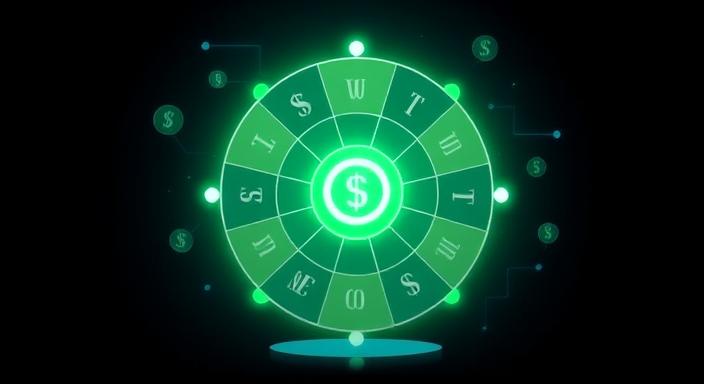The Secret of Car Ownership and Wealth Creation: The online
Executive Summary:
This report outlines key points from “The 1 Wealth Killer No One Talks About: The American Economy.” It highlights how new car purchases can damage personal wealth.
Ongoing expenses erode wealth and hinder investing. The article warns about the dangers of being “car poor.” It provides tips to help you resist pressure from society and the car industry to spend on cars.
The report shows that cars are “the number one wealth killer” for average people who own them. While costs for housing and taxes vary, owning a car adds an extra financial burden. Key Facts and Figures: The average new car now costs $48,000.
Total auto loan debt has surged
- $720 billion in 2005
- $850 billion in 2010
- $1.38 trillion in 2020
- $1.62 trillion in 2025 (record high)
The “Car Poor” Trap. ‘Car poor’ means you make too much for car payments but can’t save money.
It can feel like “being stuck on a treadmill that never slows.”

The auto industry spends billions to improve its image and boost confidence in new cars. Social pressure is real. “No one cheers for your old, paid-off Honda. Show up in a new BMW on finance, and people will nod. The desire to look rich can push people to overspend and depend on their car. Negative equity (upside down on a Loan): This is a serious problem. It happens when people owe more on their loan than what their car is worth.
“Almost a quarter were deeply underwater in Q4 2023. They thought they would owe $40,000 on a car that was only worth $30,000. The article shows that owning a car costs much more than just the sticker price. Using a $27,867 Honda Civic as an example, the author details the actual five-year expenses.
5-Year Cost to Maintain a $27,867 New Honda Civic: The online
- Depreciation: $10,999 (losing 10-15% of value before you even get home).
That is akin to “paying $2,200 a year for the privilege of watching your money disappear,” the report says. Insurance: About $12,000 for a 40-year-old with a clean record. It can be higher for younger or riskier drivers. Financing: $4,719 (10% down, 6-6.5% interest; higher with poor credit). Maintenance: $3,224 (tires, brakes, oil changes). DIY maintenance can save money. Taxes and Fees: Approximately $2,800 (road tax and registration). Repairs: $1,790 (unexpected costs). An emergency fund is essential, as with cars, it’s not if something will break but when.’ Total 5-Year Cost: “A relatively inexpensive $27,867 Honda Civic will actually cost you $46,821 over 5 years.” 4.
The Cost of Choices: Opportunity cost is the money you lose when you choose one option over another.
You could have invested every dollar spent on a depreciating car. This choice would have helped grow your wealth instead. The report notes these missed gains impact long-term wealth.
Car Ownership or Investment (5-Year Comparison):
Choose the car. If you sell the Honda Civic after 5 years, you’ll get about $19,295. This means a net loss of over $27,000. Or invest: Instead of $780 car payments, invest in an S&P 500 index fund. Over 5 years at 10% average annual yield, this could grow to $60,166—leaving you $13,000 ahead versus buying the car.
Wealth Difference: The gap between investing and car ownership is $40,721. Choosing a car means giving up this potential gain. By using the $46,821 from the Civic to buy Microsoft stock five years ago, you’d have made a 224% return. That’s over $150,000 now. Reasons for Lack of Investment: Many people don’t invest due to limited knowledge.
Tools like Trading 212 now make it simple via mobile. Car ownership can be costly. However, in many places, not having a car means missing out on opportunities. A Capital One survey found that over two-thirds of people said owning a car helped them earn money. The key isn’t avoiding cars, but using them wisely. 5.
“Car Poor” and the Paths to Wealth
The article shares three ways to cut car costs. This can free up money for investing: the online
**Buy in the “Sweet Spot”:** Choose a 3- or 4-year-old car. You’ll dodge big depreciation. Plus, you’ll enjoy modern features, reliability, and maybe a warranty. Example: A new car may cost $35,000; a similar used one costs $24,000—freeing $11,000 to invest. Keep total transportation costs—payments, insurance, fuel, and maintenance—under 15% of income.
ome. Anything more surpasses the limit, and you’re “dangerously close to becoming car poor.” Example: If your monthly income is $3,000, keep car expenses under $450. Many people trade cars every three to five years, which is costly. Instead, buy once and maintain well for better financial stability. This approach can save $300 per month, or $3,600 annually. With a 10% yearly return, savings might top $118,000 in 15 years. That could be enough for a down payment on a house.

